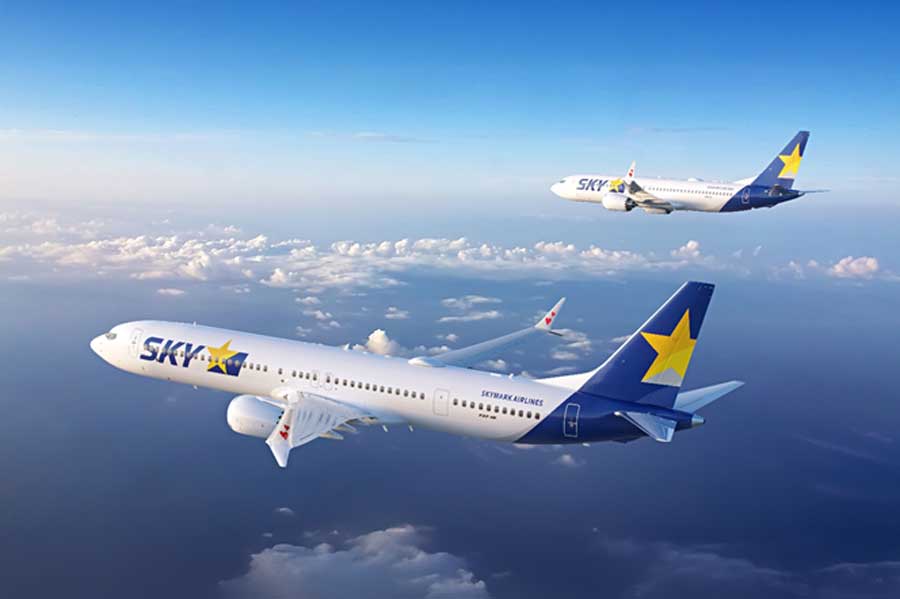
Skymark Unveils Livery Design for Boeing 737-8 and 737-10 Aircraft
All Nippon Airways (ANA) launched a Boeing 777 aircraft (Registration: JA796A) equipped with the riblet-processed film “AeroSHARK,” jointly developed by Lufthansa Technik and BASF, on April 26, marking its first deployment in Asia.
The “AeroSHARK” film is a functional surface film inspired by the structure of shark skin to reduce friction resistance. Its main feature is the film’s surface, which is etched with microscopic indents about 50 micrometers deep (approximately the width of a human hair). This special processing smooths the airflow over the aircraft’s surface, thereby reducing air resistance, leading to expectations of reduced aviation fuel usage and carbon dioxide (CO2) emissions.
The film is transparent and measures about 1 meter in width and 0.5 meters in height per sheet. It covers approximately 70% of the fuselage area, excluding the cockpit, main wings, and parts of the rear vertical stabilizers. Although the film adds roughly 120 kilograms to the aircraft’s weight, an anticipated 1% improvement in fuel efficiency is expected, taking this into account.

▲Transparent paint is applied to the edges of non-filmed areas to prevent peeling due to air resistance.
The newly launched aircraft is a passenger Boeing 777-300ER. It follows the implementation of the technology on a freight-dedicated aircraft (Registration: JA771F) that began operation on September 2, 2024. ANA is the first airline in the world to introduce AeroSHARK to both passenger and freight Boeing 777 aircraft.
The inaugural flight is NH211 from Tokyo/Haneda to London, where near the boarding gate, a panel featuring the “AeroSHARK” film was displayed for passengers to touch and feel. Promotional decals indicating the use of “AeroSHARK” were affixed near the aircraft’s L1 and L2 doors for identification during boarding.
According to Kojiro Matsui, project manager, from ANA’s Maintenance Center Technical Department 787 Fleet Team, tests conducted with the freighter already in operation confirmed that the technology’s implementation resulted in approximately 1% reductions in fuel consumption and CO2 emissions, as initially expected. This equates to an annual reduction of roughly 250 tons of fuel consumption and about 800 tons of CO2 emissions per aircraft.
In the freighter operations, no significant dirt or degradation of the film has been observed so far. Regular aircraft cleaning is conducted at the same intervals as usual, with no major operational differences other than improved fuel efficiency.
Lufthansa Technik recommends replacing the film every 4-5 years, but ANA plans to assess the optimal timing for replacement based on the film’s condition in their operational environment.
The decision on introducing the third and subsequent aircraft will be made based on the monitoring results of these two aircraft. However, since “AeroSHARK” is currently only available for Boeing 777s, early adoption on other aircraft types is challenging.